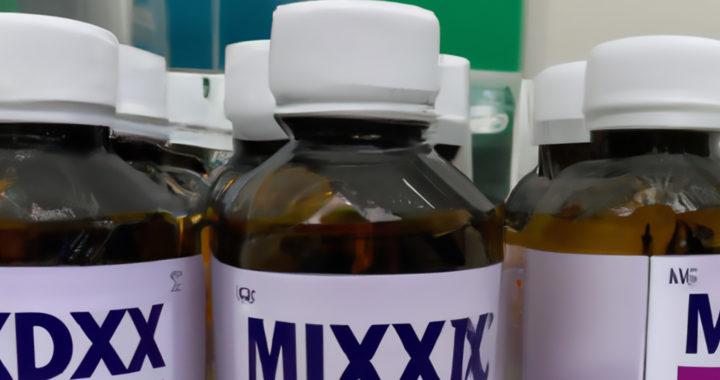Minoxidil is the most popular medication used for treating hair loss due to androgenetic alopecia or male pattern hair loss and female pattern hair loss. It is available as a non-prescription topical solution or a prescription-based oral medication. There is a wealth of studies investigating and attesting to its effectiveness despite the fact that its exact mechanism of action remains unknown. It is still not a one-size-fits-all solution to all types of hair loss.
Pros of Minoxidil in Treating Hair Loss and Promoting Hair Growth
The effectiveness of minoxidil has been documented by numerous researchers for several decades. It remains the go-to medication for androgenetic alopecia and it is available in most pharmacies and even supermarkets and online storefronts.
According to research, this medication acts as a vasodilator that widens blood vessels and improves blood flow to hair follicles. It also triggers and prolongs the anagen phase of the hair growth cycle while also boosting the development of healthier hair follicle cells.
Below are its specified benefits:
• Effective for Androgenetic Alopecia: Studies have revealed that it is effective in addressing hair loss in men and women with pattern baldness or androgenetic alopecia. Hair growth can be observed in 20 to 40 weeks after its first use.
• Generally Accessible and Affordable: Topical minoxidil is available over the counter without a prescription. Most products retail at less than USD 20.00. Oral minoxidil is available via a prescription but it remains accessible.
• Ease of Use and Minimal Side Effects: Another benefit of using minoxidil is that its topical formulation can be applied to the target area without the need for medical supervision. It is also safe and well-tolerated in general.
• Flexible Dosing and Combination Treatment: It is available in topical form with 2 percent and 5 percent strength or as a 5-milligram oral medication. It can be used with other hair loss treatments such as oral DHT blockers like finasteride.
Cons of Minoxidil in Treating Hair Loss and Promoting Hair Growth
Of course, as mentioned, minoxidil cannot treat all types of hair loss. It is also important to note that there are different causes of hair loss and each requires a particular course of action. This medication also has several issues and limitations.
Below are the specific limitations:
• Ineffective In Certain Cases of Hair Loss: One of the biggest drawbacks or disadvantages of minoxidil is that it is ineffective in treating hair loss due to alopecia areata, telogen effluvium, and scarring alopecia.
• Possible Side Effects of Topical Minoxidil: Some individuals experience itching and irritation due to the presence of other ingredients such as ethanol and propylene glycol in most water-based formulations. A foam-based formulation is an alternative.
• Adverse Reactions to Oral Minoxidil: It may induce swelling of the face, rapid heartbeat, or lightheadedness. Focal necrosis of the papillary muscle and subendocardial areas of the left ventricle has been observed in animals.
• Time Commitment and Possible Dependency: It takes months for this medication to take effect and it should be used regularly. Discontinuing treatment would cease hair growth and it is possible for hair loss to resume.
• May Be Ineffective Upon Reaching Plateau: Another drawback of minoxidil is that it is more effective in younger men experiencing androgenetic alopecia in less than five years. The effect might plateau after 7 to 8 years of use.
Unwanted Hair Growth in Certain Body Parts: This medication may also cause unwanted hair growth in exposed areas such as the face and the neck. This is a rare and manageable side effect but it can still bother some people.
FURTHER READINGS AND REFERENCES
- Gupta, A. K. and Charrette, A. 2015. “Topical Minoxidil: Systematic Review and Meta-Analysis of its Efficacy in Androgenetic Alopecia.” Skinmed. 13(3): 185-189. PMID: 26380504
- Lucky, A. W., Piacquadio, D. J., Ditre, C. M., Dunlap, F., Kantor, I., Pandya, A. G., Savin, R. C., and Tharp, M. D. (2004). “A Randomized, Placebo-Controlled Trial of 5% and 2% Topical Minoxidil Solutions in the Treatment of Female Pattern Hair Loss. Journal of the American Academy of Dermatology. 30(4): 541-533. DOI: 1016/j.jaad.2003.06.014
- Scow, D. T., Nolte, R. S., and Shaughnessy, A. F. 1999. “Medical Treatments for Balding Men.” American Family Physician. 59(8): 2189-2194. PMID: 10221304
- Suchonwanit, P., Thammarucha, S., and Leerunyakul, K. 2019. “Minoxidil and Its Use in Hair Disorders: A Review.” Drug Design, Development, and Therapy. 13: 2777-2786. DOI: 2147/dddt.s214907






